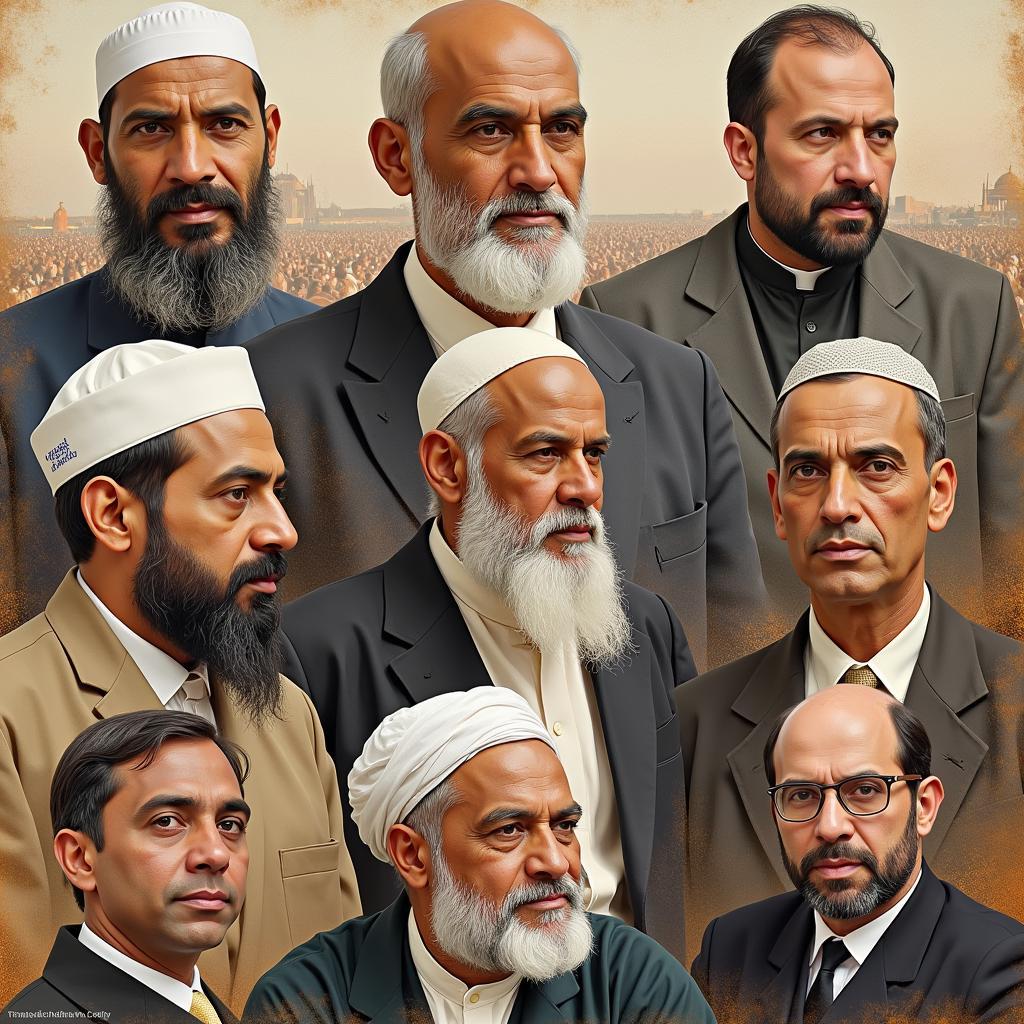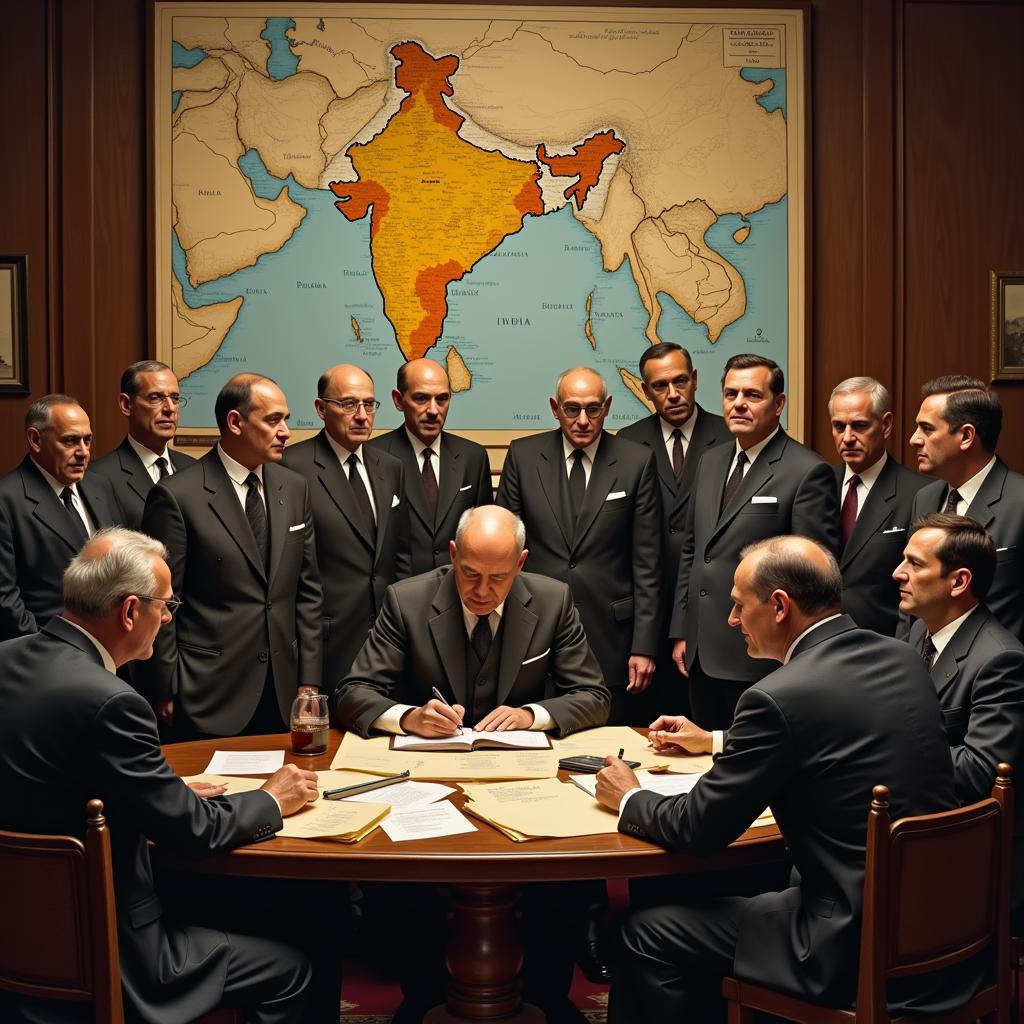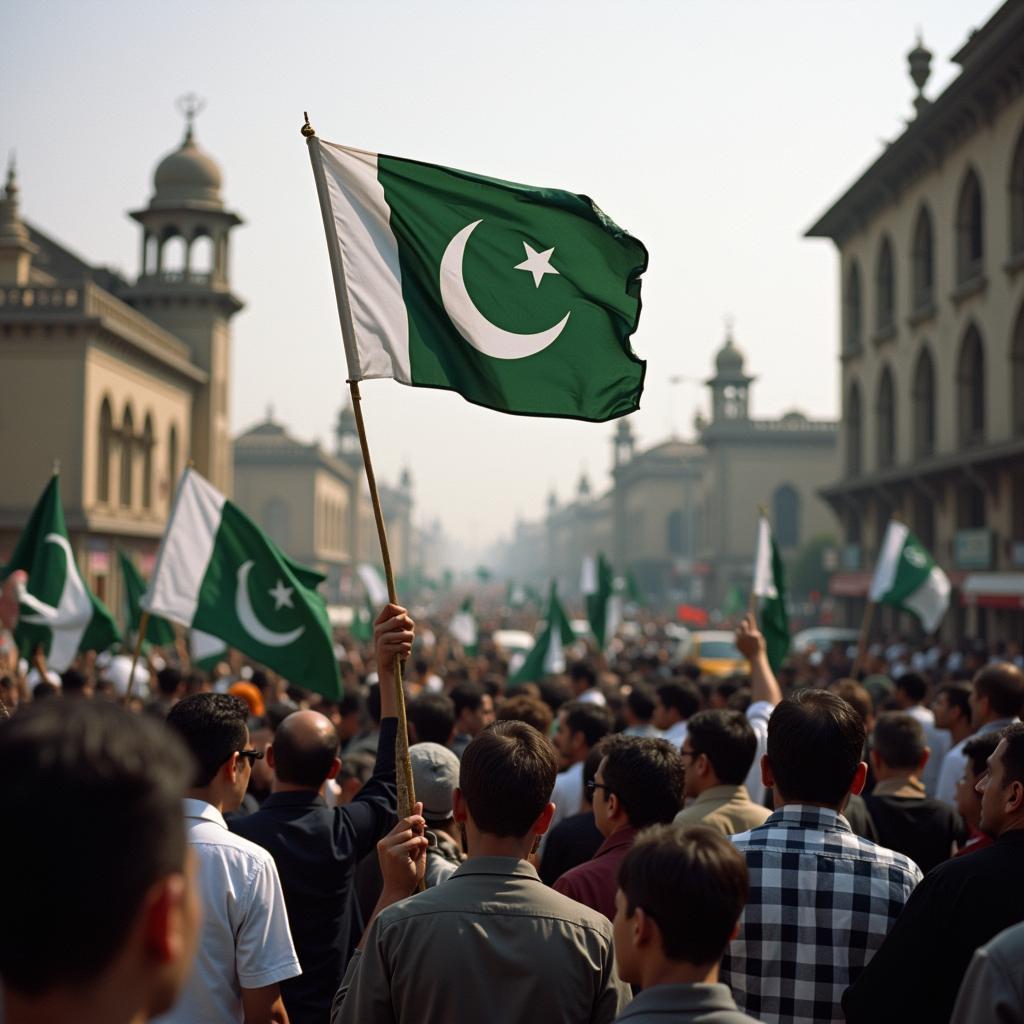The Pakistan Movement, a pivotal period in South Asian history, spanned from 1857 to 1947. This period witnessed the evolution of Muslim nationalism in India, culminating in the creation of Pakistan. This article delves into the significance of the Pakistan Movement 1857 To 1947 Pdf, exploring the key events, figures, and ideological underpinnings that shaped this transformative era.
The Seeds of Change: 1857 and the Rise of Muslim Identity
The Indian Rebellion of 1857, while ultimately unsuccessful, served as a catalyst for nascent Muslim nationalism. The British response to the uprising, often perceived as disproportionately targeting Muslims, fueled resentment and a sense of distinct identity. This period saw the emergence of prominent Muslim leaders who began to articulate the need for a separate political voice.
 Early Muslim Leaders of 1857
Early Muslim Leaders of 1857
The Formation of the Muslim League: A Defining Moment
The establishment of the All India Muslim League in 1906 marked a crucial step in the Pakistan Movement. The League provided a platform for Muslims to advocate for their rights and interests within the broader Indian political landscape. This era saw the articulation of the Two-Nation Theory, which posited that Hindus and Muslims constituted distinct nations with different cultural, religious, and political aspirations. This theory became the ideological cornerstone of the movement for a separate homeland.
What were the primary objectives of the Muslim League? The League sought separate electorates for Muslims, increased representation in government bodies, and protection of Muslim religious and cultural practices.
The Lahore Resolution: A Call for Pakistan
The Lahore Resolution of 1940, commonly known as the Pakistan Resolution, formally articulated the demand for a separate Muslim state. This resolution called for the creation of independent states in the Muslim-majority regions of northwest and northeast India. The resolution was a watershed moment, solidifying the demand for Pakistan and setting the stage for the final push towards independence.
 Signing of the Lahore Resolution 1940
Signing of the Lahore Resolution 1940
From Partition to Independence: The Birth of Pakistan
The final years leading up to 1947 were marked by intense political negotiations, communal violence, and mass migration. The British government, facing mounting pressure, finally agreed to partition India. On August 14, 1947, Pakistan emerged as an independent nation. The birth of Pakistan was accompanied by immense joy and hope but also by the tragic displacement of millions of people.
Key Figures of the Pakistan Movement:
Who were the key figures of the Pakistan Movement? Muhammad Ali Jinnah, often referred to as the Quaid-e-Azam (Great Leader), played a pivotal role in leading the movement for Pakistan. Other prominent figures include Liaquat Ali Khan, Fatima Jinnah, and Allama Iqbal.
 Celebrating Pakistan Independence in 1947
Celebrating Pakistan Independence in 1947
Conclusion: The Legacy of the Pakistan Movement 1857 to 1947 PDF
The Pakistan Movement 1857 to 1947 pdf provides a valuable resource for understanding the complexities and significance of this transformative period. The creation of Pakistan represents a pivotal moment in South Asian history, shaping the political landscape of the region and impacting the lives of millions. Further exploration of this era is crucial for understanding the dynamics of contemporary South Asia.
FAQ
- What was the Two-Nation Theory?
- When was the Muslim League formed?
- What is the significance of the Lahore Resolution?
- Who was Muhammad Ali Jinnah?
- When did Pakistan gain independence?
- Where can I find reliable pakistan movement 1857 to 1947 pdf resources?
- What were the main challenges faced by Pakistan after independence?
You might also be interested in reading about the partition of India and the subsequent migration. Explore more articles on our website about the history of Pakistan.
For further assistance, please contact us: Phone: +923337849799, Email: [email protected] or visit our office at Dera Ghazi Khan Rd, Rakhni, Barkhan, Balochistan, Pakistan. We offer 24/7 customer support.